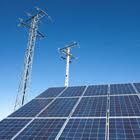This website uses cookies so that we can provide you with the best user experience possible. Cookie information is stored in your browser and performs functions such as recognising you when you return to our website and helping our team to understand which sections of the website you find most interesting and useful.
What are Feed In Tariffs (FIT) and why Australia needs a standardised national feed in tariff
- 14/05/2012
- Posted by: Nicole
- Category: Blog
What are Feed In Tariffs (FIT) and why Australia needs a standardised national feed in tariff
 When a solar power system’s is grid connected, you can be paid for the surplus energy that is produced by your system that is fed back into the grid. Essentially, the feed-in tariff is the rate that is paid for an amount of electricity that is supplied to the electricity grid from a specified renewable electricity generation source, such as solar panels, or a wind turbine.
When a solar power system’s is grid connected, you can be paid for the surplus energy that is produced by your system that is fed back into the grid. Essentially, the feed-in tariff is the rate that is paid for an amount of electricity that is supplied to the electricity grid from a specified renewable electricity generation source, such as solar panels, or a wind turbine.
To date, regulations for feed-in tariffs for contributions of renewable energy exist in approximately forty countries around the globe.
How do feed-in tariffs work here in Australia?
There is currently no nationalised program. Instead, schemes that are particular to each state are in operation.
Programs in the different states of the country began (and have even been completed in some parts of Australia) at different times and used different models for payment of energy fed-in to the electricity grid. These schemes were of two different models; some schemes pay on a gross amount (total amount of green energy produced being measured), while others pay on a net amount (only the excess green energy being measured after the electricity needs of the premises have been satisfied). This has resulted in a huge amount of confusion and economic uncertainty for renewable energy companies and their customers.
International Evidence supporting a nationwide feed- in tariff
While there is considerable variation across Australia, a good example of a standerdised, nationwide feed-in tariff scheme is evident in Germany. For the last twenty years the German government has had a commitment to renewable energy through the Electricity Feed Act. This Act legally regulates the way that electricity from solar panels and other renewable sources are fed in to the electricity grid. Companies can then buy electricity converted from renewable sources at fees that are set.
This scheme has enjoyed incredible growth over the last two decades, to the point that it has been expanded and improved. Its success can be demonstrated by the amount of electricity that has been contributed to the grid from renewable sources.
In comparison to Germany, Australia does not have such a successful feed-in system. We have far more sunlight at our disposal than Germany has, so it seems the difference is that the feed-in tariff program here is less generous, stable and regulated.
A few good reasons for having standerdised feed in tariff in place
Investing in a solar system here in Australia is a wonderful thing to do for the environment and, potentially, offers your significant financial savings in energy expenditure.
Solar energy, like other renewable energy sources, results in less pollution of the atmosphere through greenhouse gas emissions and can be significant in the development of the solar power industry and the creation of jobs.
Contributing surplus energy back to the grid is important and effective. It is known that whenever electricity is transmitted over sizable distances, some is lost through ‘line loss’. When solar panels are fitted to the roofs of people’s homes, the electricity that is generated will often be sufficient to supply the house to which the panels are fitted and other houses near to it.
Having a feed-in tariff system is particularly important in the summer months. In summer, it is incredibly common for blackouts and power failures to occur because the electricity grid becomes overloaded. At these times, the availability of solar power can make a significant difference and should therefore be adequately compensated.
While there is no nationwide feed-in tariff scheme in Australia, the example in Germany shows just how important such a system is. With a strong system is in place, awareness and respect for solar power and other forms of renewable energy will correspondingly increase.
If a nationwide standerdised feed in tariff was in place renewable energy system owners would be able to reliably calculate their return on investment over a long period. There would be a surge in the investment of large scale renewable energy systems because of the guaranteed long term return. Lastly renewable energy businesses would have a much more stable environment in which to prosper and create jobs.
Contact Gold Coast Energy today to find out more about how feed in tariffs work and discuss how your home or business and the environment can start reaping the rewards of producing clean energy with Solar!
